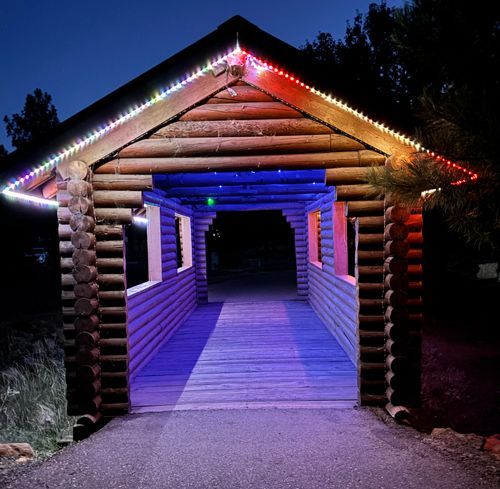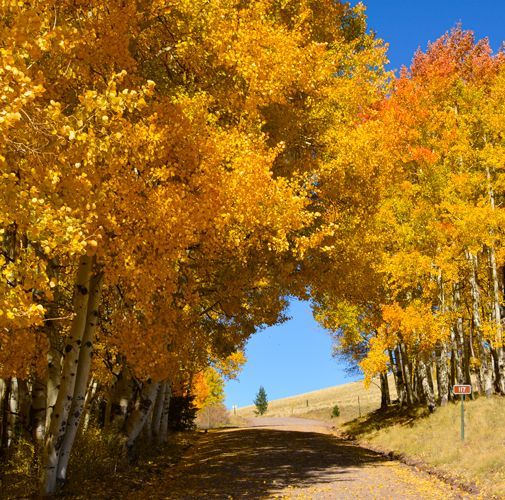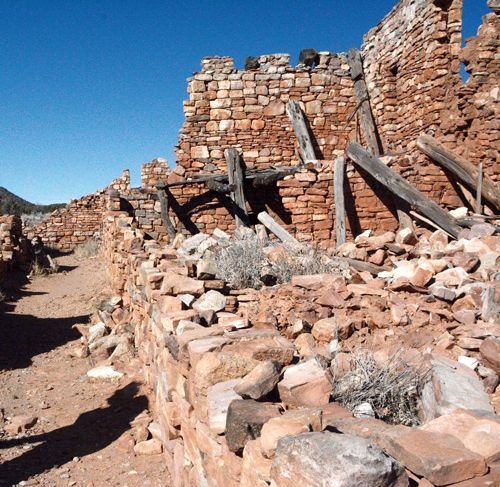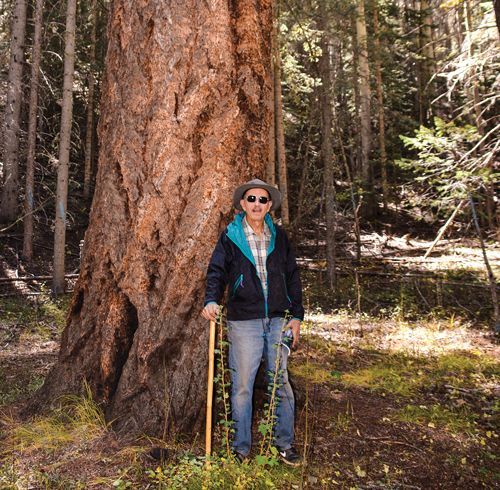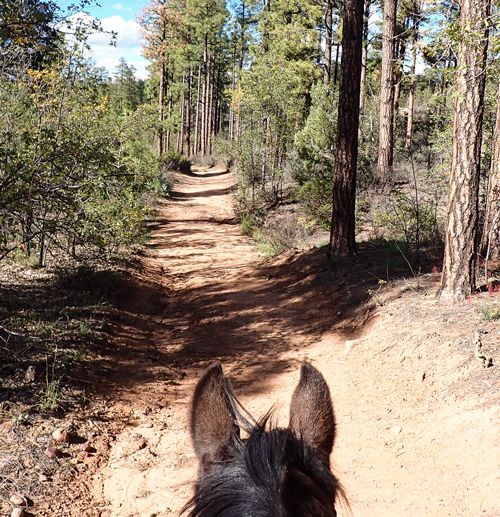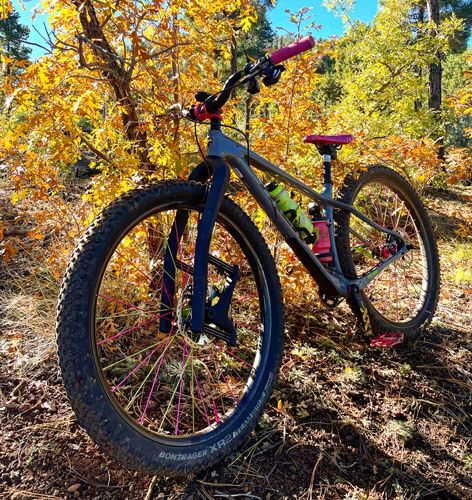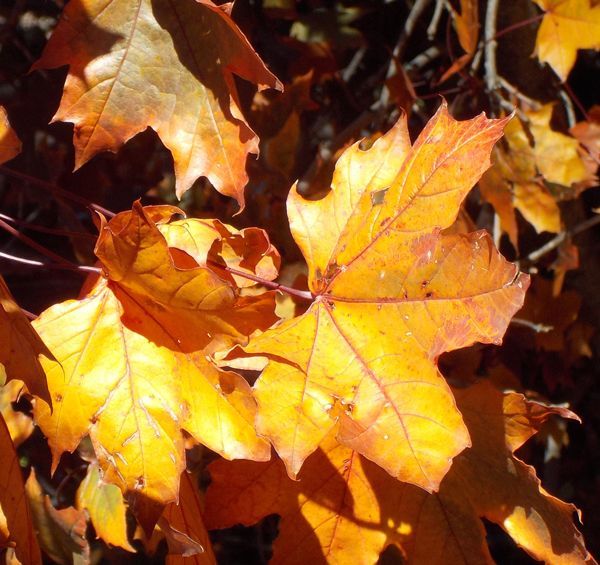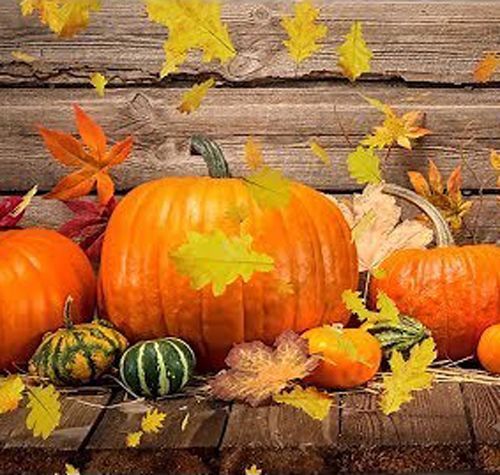It was reassuring to see that twenty-somethings enjoying investigating the natural world around them.
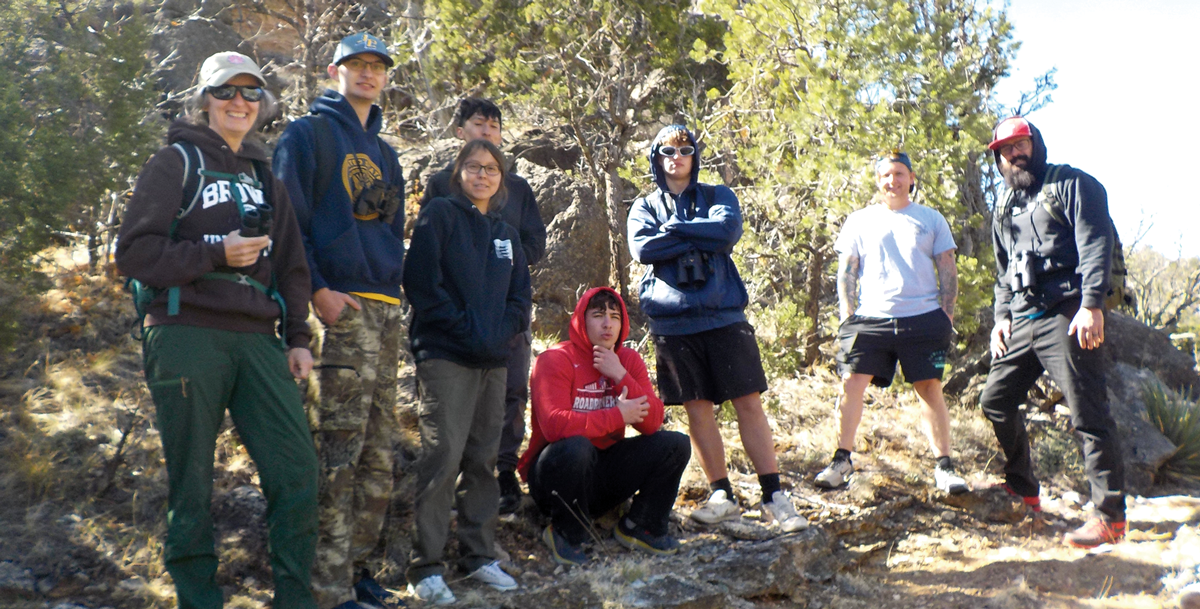
Article And Photos
By Rob Bettaso
It was mid-afternoon on a Friday; late in April. The last item to load into my truck was a small cooler, which only held some fruit, a chocolate bar, and some cream for coffee — the ingredients of tomorrow’s breakfast. Somewhere between home and my destination (a deep canyon along the eastern edge of Coconino County) I would stop at a grocery store and pick up something ready-to-eat for this evening’s dinner and probably a few snacks for my day and a half outing in the Apache-Sitgreaves National Forest.
I was feeling a bit out of sorts and knew that part of it was because of the annoying winds that had started blowing late in the morning. The weather report had said that a cold front would be moving through over the course of the next couple of days and that, instead of providing some badly needed rain, it would only offer fierce winds and dropping temps. Lovely. I was also a tad cranky because I was sleep deprived; having made too many withdrawals from my body’s sleep-bank during the latter portion of the week. My most recent foray, joining a friend to scout his turkey hunt just yesterday, had involved a 2:00 a.m. wake-up so that we could meet for a 3:00 a.m. departure to the Big Lake area (Apache County). There, he would use a turkey-call to provoke a vocal response from the “gobblers” (male turkeys) in the morning darkness to get an idea where the roosting sites were likely to be on opening day. And while that experience was very fun, it had left me feeling slightly run down.
So now I was less enthusiastic than I would have normally been as I began my travels to join my friend Pat and her class of seven Northland Pioneer College (NPC) students. As I pulled out of my driveway and began the two-hour drive to our rendezvous and camping site, I got to thinking about how back east, where I grew up, the counties are small in terms of area but large in terms of population. Here in the West, it is mostly just the opposite. In fact, the county to which I was going today (Coconino) is the second largest county in the U.S. and it includes only one large city: Flagstaff. Mind you, I am not complaining about our wide-open Western spaces and I only comment on it because it seems odd that things evolved the way they did.
County jurisdictions contain several significant governmental entities, including such things as the Sheriff’s Department, Assessor’s Office, and public health programs. They are also often the land unit in which biologists geo-reference their field specimens. As an example, if you look at the plates and illustrations in some of the older “field guides,” the guides will often name the county in which the “type specimen” was found (a “type specimen” is the first sample of a plant or animal species that has been archived into a major museum’s collections). Now days, since it is common for people to use on-line data-bases to record their plant and animal sightings (think: “i-Naturalist” or “e-Bird”), one of the basic data-entry points is still at the level of the county.
While human-designated boundaries are certainly worth noting, as a former fisheries biologist, I tend to think in terms of hydrologic units: basins, watersheds, drainages, streams. The canyon I was heading to this afternoon was one of the many perennial drainages that eventually flow into the Little Colorado River. Despite its name, the Little Colorado River is a major Arizona river and, in fact, it traverses the northern portions of three counties in Arizona (Apache, Navajo, and Coconino) before it enters the Colorado River within the Grand Canyon National Park.
When I arrived at our campsite for the NPC classes’ fieldwork, I was disappointed (but not surprised) to see that the canyon’s channel was bone-dry. Hopefully, there would be some water down-stream from camp as tomorrow morning Pat and I would lead the students in that direction to look for, identify, and observe whatever plant and animal species we could find during the morning’s practicum in riparian ecology. I parked my truck and walked over to where the students were gathered in their make-shift kitchen. It was late in the day and since the canyon is deep, camp was already mostly in the shade and folks were wearing jackets while they played a game of cards. After Pat introduced me to her students, I declined the offer to join them in their cards (it was a game I had never heard of called “Spoons”) because I wanted to eat a quick dinner and then check out the creek-bed to see if I could find water.
As I ate from my Safeway “Cobb Salad” I stood on the outside of the circle of card-players. They were using rocks to weigh down their cards but otherwise seemed unperturbed by the wind. I enjoyed hearing their light-hearted banter and I could tell that I would have felt very at home with a group like this (either as a student or as a teacher) if I had spent more time with them. It was also clear to me that my longtime friend Pat fit right in with her students and would occasionally offer her share of benign “smack-talk” as the card playing became more intense.
After dinner, I left the group and headed down canyon in search of water; plus whatever wildlife I might see. Despite the winds, it didn’t take long to tally a bird count of about a dozen species, but other critters (invertebrates, herps, and mammals) were not obviously out and about. This did not bode well for tomorrow’s “species blitz” but I wasn’t too worried about that, as given the good humor that I observed at the card game, I figured the students would take any minor setbacks in stride.
Years ago, both Pat and I had been field biologists with the Arizona Game and Fish Department (AGFD). My focus had been Arizona’s meager number of native fishes and Pat’s had been the state’s very rich diversity of amphibians and reptiles. Before hiring-on with the AGFD, both Pat and I had done stints with the Peace Corps in Africa: she in Malawi in the early/mid 1990s and me in Zaire in the late 70s and early 80s. As such, when we met at AGFD, we became instant chums.
When I returned to camp, I let Pat know that I had found no water but that I thought the birds alone would keep us busy during the morning’s explorations. She was relieved at this news, especially since the temperature was rapidly dropping and the wind was continuing to blow even after the sun had set. Because fire restrictions were in place, we had a cold camp and, without a camp-fire to stare into, by 8:00 p.m. folks were wandering off to their tents to “call it a day.” I stayed up until 8:30 and by then, I knew that after 10 minutes of star-gazing from my cot, I would be ready for sleep. Finally, I would make a significant deposit into my over-drawn sleep-bank.
In the morning, after coffee and a bite to eat, our group headed into the canyon and we picked our way along the cobblestones in search of exciting representatives of the riparian biota. My impressions from yesterday’s observations of the student’s group dynamics while in camp were soon re-enforced by watching how they interacted with Nature. It was truly reassuring for me to see that not all teens and twenty-somethings are reflexively glued to screens and that, in fact, when allowed to investigate the natural world around them, some of the younger generation quickly become inquisitive, excited, and grateful! I believe this tendency is innate to nearly all of us, but that it takes a good mentor, such as Pat, to bring it to full flowering. Pat is naturally a nurturing type of person, and whether she is helping her students understand the complexities of an ecological principle in action, or she is patiently pointing out the presence of a cryptically patterned lizard motionless on a rock, she has the enthusiasm that is contagious.
We eventually came to water in the canyon; first, in the form of scattered pools, and then later as a continuous, flowing creek. As morning wound down, we took an upland route back to camp and, upon our return, I think we were all satisfied with our experience in the living laboratory of wild Arizona. After a quick snack, I left the crew to their more elaborate lunch and packing. I enjoyed a leisurely drive back to the highway along the nearly 15 miles of dirt road; stopping occasionally to watch various birds including: a foraging flock of Bushtits, an industrious Hairy Woodpecker working the bark of an old pine, and a wild and free Red-tailed Hawk — soaring majestically; high among the puffy clouds.
Just before I reached the highway, I saw up ahead a large Gopher snake stretched out and motionless in the middle of the road. I pulled off to the side and tried to encourage the snake off the road and into the relative safety of the nearby scrubby undergrowth. In classic fashion, the big snake instantly coiled and began mimicking a rattlesnake by vibrating his tail. I opted to not risk being bitten and instead found a stout stick with which I could gently lift the colorful serpent and take him away from the road.
Mission accomplished, I got back behind the wheel of my truck and drove the last few miles to Highway 260. As I merged into weekend traffic, I couldn’t help but wish that the NPC folks had been caravanning with me so that Pat could have given them a quick lesson in the life-history of a gopher snake. I was sure that her students would have hung on her every word; and then begin asking lots of good questions. After all, one of the most impactful things a teacher can do is to make a fundamental and positive difference in the way students experience the world around us.

